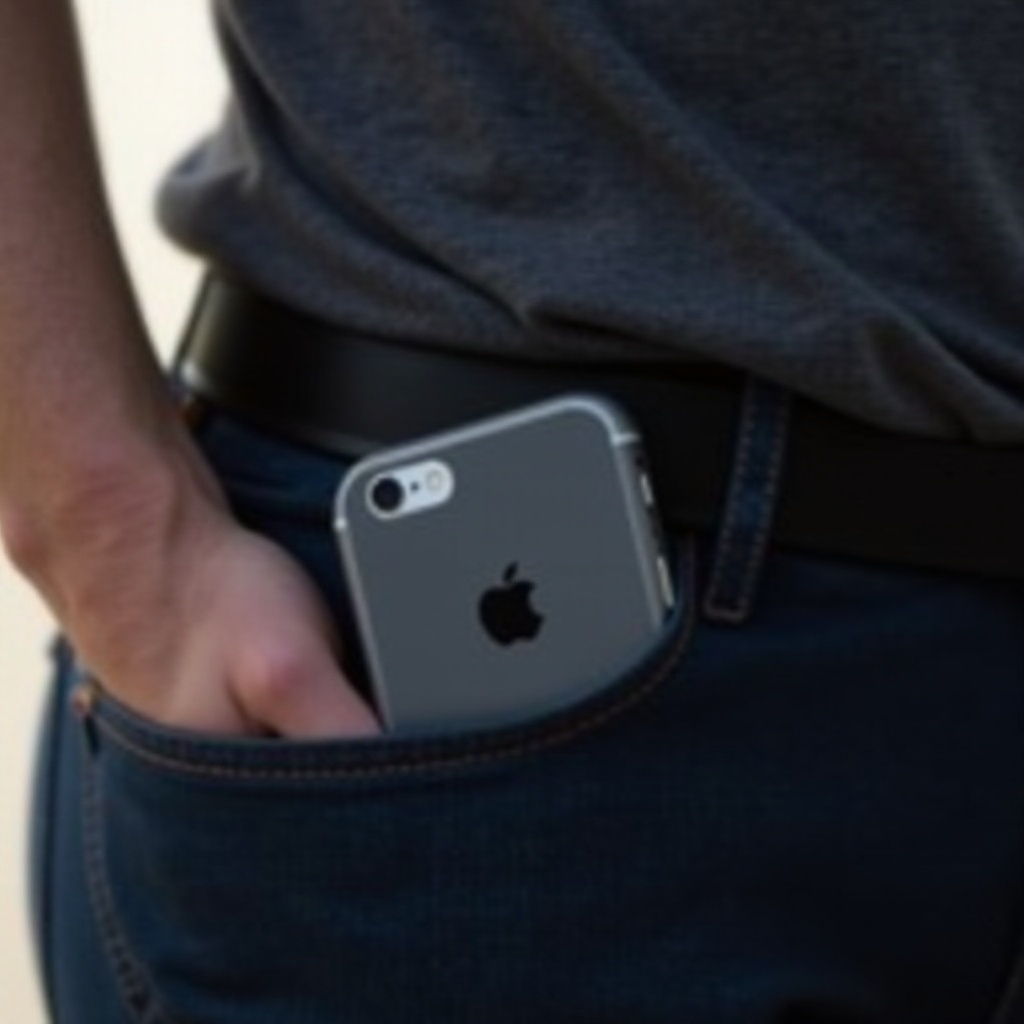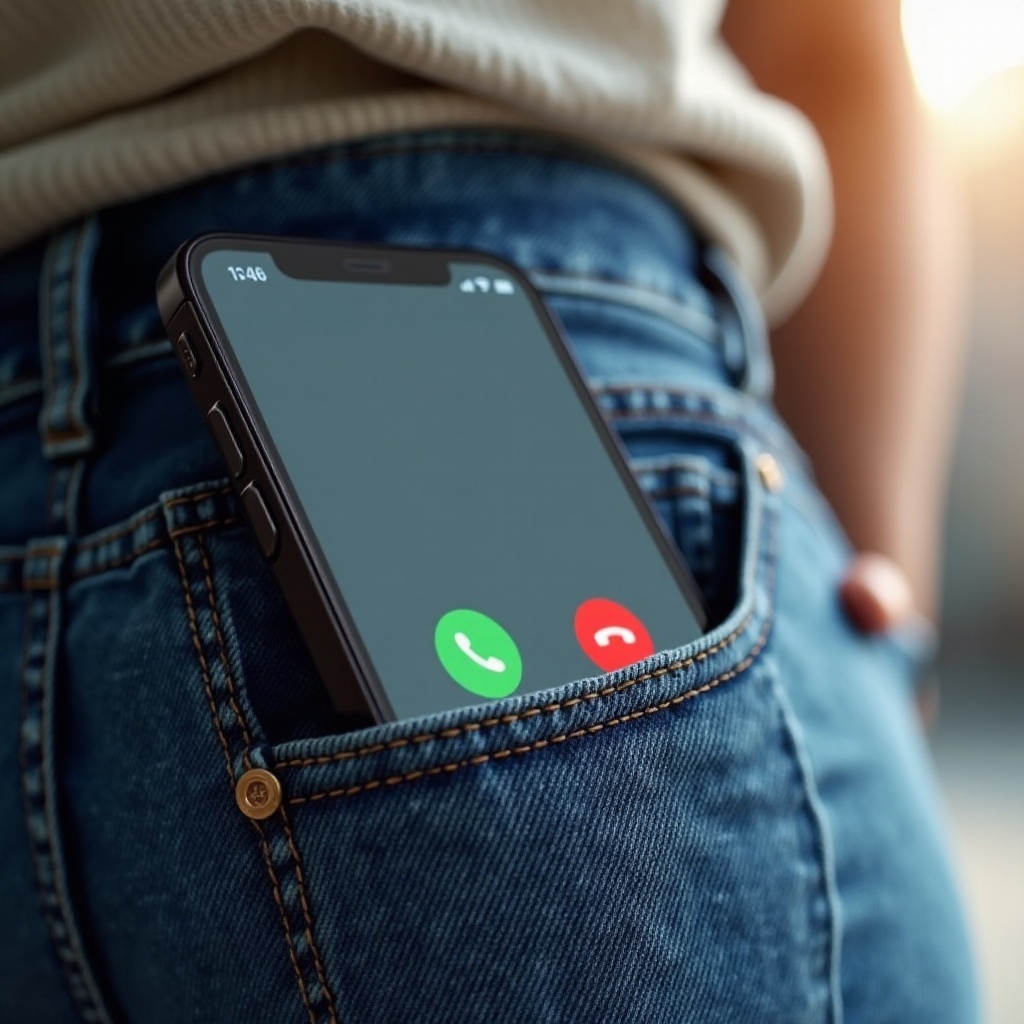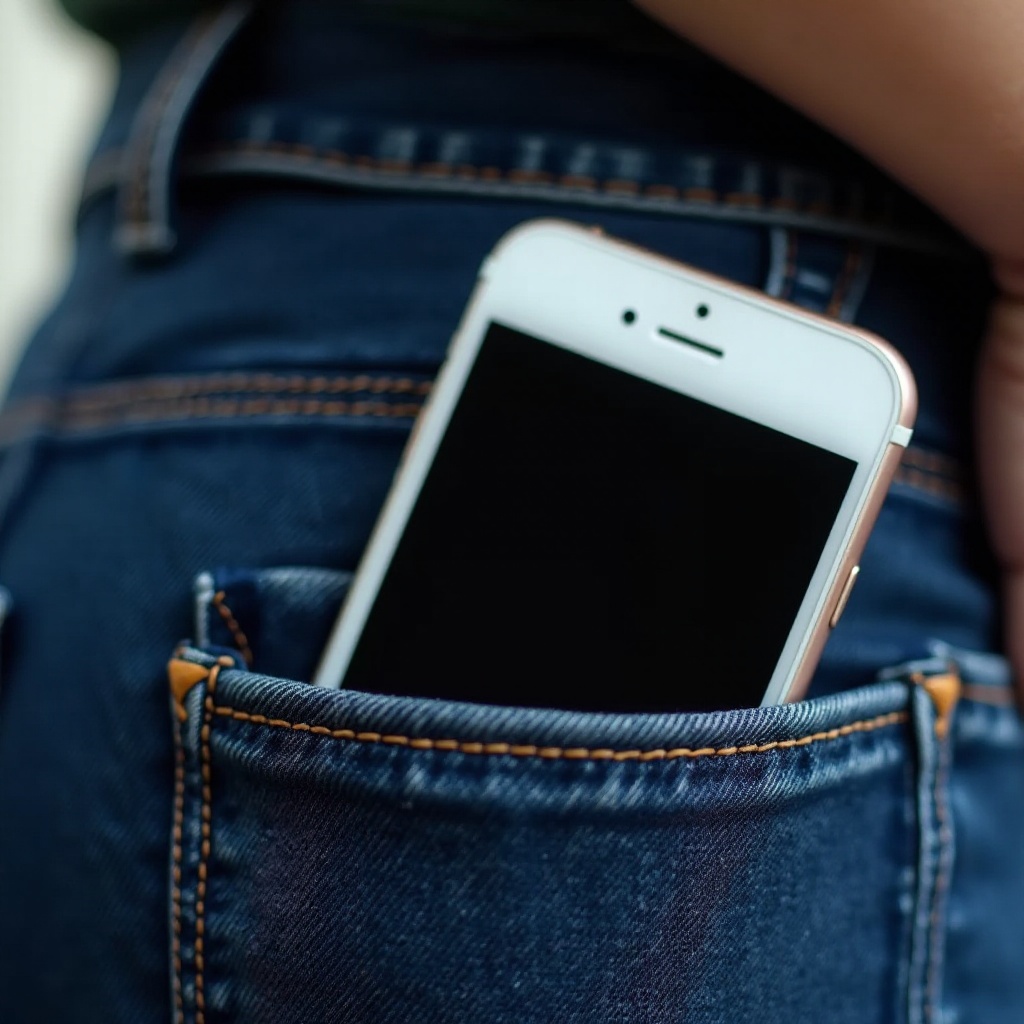Introduction
Pocket dialing, or butt dialing, can cause unintentional calls, leading to potential privacy breaches and unnecessary costs. For iPhone users, this issue is often tied to the device’s sensitive touch screen and certain user habits. Understanding the causes and implementing preventative measures will help you minimize this inconvenience and enhance your mobile experience.

Understanding Pocket Dialing: Causes and Concerns
Pocket dialing happens when unintended contact occurs between your phone’s screen and other surfaces, like the fabric of your clothing or items in your bag. The iPhone’s touch-sensitive screen and insufficient lock mechanisms are frequent culprits. These accidental actions can lead to unwanted calls and open apps, increasing the risk of data leaks and privacy concerns. Identifying the cause is crucial for implementing the right solutions.

Adjust Your iPhone Settings
To address pocket dialing, start by adjusting your iPhone’s settings for optimal security and convenience.
1. Secure Your Lock Screen
– Enable Face ID or Touch ID to ensure that your phone unlocks only with your recognition features.
– Set Auto-Lock to the shortest possible duration to ensure your phone locks automatically after inactivity.
- Adjust Touch Sensitivity
-
Go to Settings > Accessibility > Touch to alter touch sensitivity settings. Lowering sensitivity may reduce the chances of accidental screen activation.
-
Utilize Face ID or Touch ID
- These biometric security measures not only protect your phone from unauthorized access but also minimize accidental unlocks while in your pocket or bag.
After fine-tuning these configurations, your device will become more secure, reducing the frequency of pocket dialing.
Use Built-In iPhone Features to Prevent Pocket Dialing
Additional built-in iOS features can help further protect against unintentional actions on your device.
1. Activate Guided Access Mode
– Guided Access limits your phone to a single app and can disable touch input areas. Activate it via Settings > Accessibility > Guided Access.
- Enable AssistiveTouch
-
AssistiveTouch offers a virtual Home button that can help lock your screen through an on-screen interface. Enable it in Settings > Accessibility > Touch > AssistiveTouch.
-
Explore Do Not Disturb Options
- Do Not Disturb silences calls and notifications when the screen is locked, preventing disruptions from accidental activations.
These features, when activated, protect your device from unwanted inputs while keeping it usable.
Physical Solutions to Prevent Pocket Dialing
Beyond digital solutions, physical measures can also prevent pocket dialing.
1. Choose the Right Protective Case
– Select cases with a cover or flap that shields your screen and adds an extra layer of protection.
- Consider Screen Protectors and Covers
- High-quality screen protectors decrease responsiveness, reducing the likelihood of accidental touches.
Physical barriers complement digital settings, offering enhanced protection against unintended actions.

Utilize Pocket Dial Prevention Apps
Consider third-party apps for added safety against pocket dialing.
1. Recommended Third-Party Apps
– Apps such as ‘PocketMode’ can lock the device when its sensors detect it’s in a pocket.
- Pros and Cons of Using Apps
- While effective, these apps can drain the battery or require frequent updates. Choose reputable apps to ensure safety and efficiency.
These apps provide a supplementary layer of protection, enhancing the security settings already present on your device.
Practical Tips and Daily Habits
Creating and maintaining good habits can significantly decrease pocket dialing incidents.
1. How to Store Your Phone Safely
– Always place the phone screen towards your body or in a secure, separate pocket.
- Perform Regular Maintenance Checks
- Keep your iOS and apps up to date. Updates often include features that improve security and touchscreen management.
By incorporating these habits into your routine, you’ll naturally increase your phone’s usability and security.
Conclusion
Preventing pocket dialing on your iPhone is straightforward with the right combination of settings, features, physical protection, and everyday practices. By proactively adjusting your device and adopting new habits, you can ensure a more secure and efficient mobile experience.
Frequently Asked Questions
How can I stop my iPhone from calling on lock screen?
Ensure your phone is secured with Face ID or Touch ID, and activate Do Not Disturb to mute calls when locked.
Does using a screen protector help in reducing pocket dials?
Yes, a firm screen protector can help decrease sensitivity to accidental touches, thus aiding in preventing pocket dials.
Are there any risks associated with using third-party pocket dial prevention apps?
While generally helpful, third-party apps might increase battery consumption. It’s essential to select well-rated apps for safety and performance.
